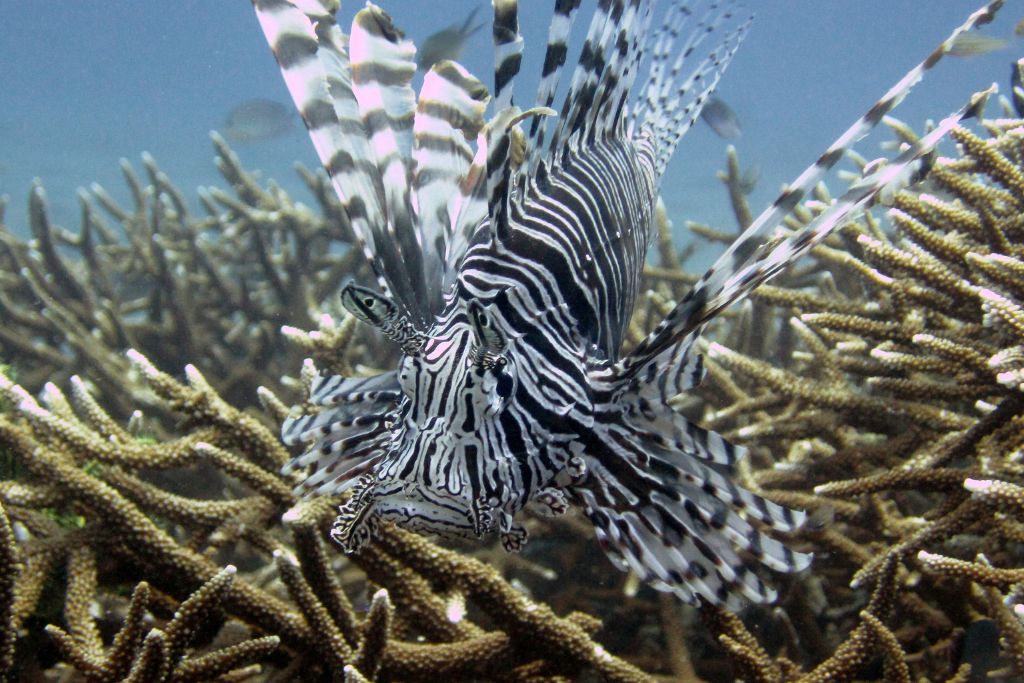The economic damage from invasive species has quadrupled every decade since 1970, the UN said.
—
More than 3,500 invasive species introduced by human activities to regions and biomes worldwide pose a serious threat to human health, food security, and biodiversity, costing the global economy $423 billion each year, new research suggests.
The new analysis, published Monday by the Intergovernmental Science-Policy Platform on Biodiversity and Ecosystem Services (IPBES), the leading UN body on biodiversity and conservation, said that of the at least 37,000 alien species established worldwide, more than 3,500 pose huge threats to humans and ecosystems worldwide, impacting especially communities with the greatest direct dependence on nature, such as Indigenous Peoples. These include 1,061 plants, 1,852 invertebrates, 461 vertebrates, and 141 microbes.
Invasive species are non-native organisms – such as animals, plants, fungi, and microorganisms – that grow and spread quickly, endangering native organisms, ecosystems, and human health. They can manifest as destructive crop or forest pests, for example, destroying native plants and animals. Invasive mosquitos can spread diseases such as dengue fever, malaria, Zika, and West Nile, endangering human health. In Guam, an island in the South Pacific, Brown tree snakes, which were accidentally brought there in the late 1940s or early 1950s, are responsible for the extinction of nine of the island’s 11 forest-dwelling bird species.
More on the topic: Bangladesh Battles Deadliest Dengue Fever Outbreak on Record as WHO Blames Global Warming for Spike in Cases Worldwide
In the past few decades, globalisation has enhanced international trade and the movement of people, goods, food products, and animals, resulting in the mobility of various species outside their native habitats. Extreme weather events like floods, droughts, and hurricanes have further accelerated migration patterns. Climate-induced changes in land cover and atmosphere also boosted their proliferation.
Hundreds of forests and habitats across the globe are ravaged by them, and the ramifications are truly alarming. Invasive plant species frequently alter ecology by driving native crops to extinction, destroying terrestrial or aquatic vegetation, and polluting the native gene pool through cross-breeding. The team of 86 scientists from 49 countries behind the four-year assessment of the global impacts of these species, however, concluded that the threats posed by invasive species are “severely underappreciated, underestimated, and unacknowledged.”
From a week of intense discussions to a successful conclusion!🌍🤝🎉
We are elated to share the approval of the #InvasiveAlienSpecies Report by member States at the #IPBES10 Plenary.
Celebrating the dedication of every expert involved: a journey worth every clap and hug! 🌿✨ pic.twitter.com/tnGK8f4uGT
— ipbes (@IPBES) September 2, 2023
The findings build on the IPBES’ previous assessment, conducted in 2019, which suggested that invasive alien species “are one of the five most important direct drivers of biodiversity loss – alongside changes in land- and sea-use, direct exploitation of species, climate change and pollution.”
Loss of biodiversity is not only an environmental issue but also a socio-economic one. Research has found that biodiversity in the form of ecosystem services such as food provisioning, carbon storage, and water and air filtration has a high economic value – worth more than US$150 trillion annually. Loss of biodiversity also comes as a significant threat to many businesses as they face higher raw material costs, as sources of food, fuel, structural materials, and medicinal resources are greatly reduced.
“I ask all decision-makers to use this report’s recommendations as a basis to act on this growing threat to biodiversity and human well-being – and make a real contribution to achieving the Kunming-Montreal Global Biodiversity Framework by 2030,” said Inger Andersen, UN Environment Programme’s (UNEP) Executive Director, who described invasive species as “one of the horsemen of the biodiversity apocalypse that is riding down harder and faster upon the world.”
Target 6 of the Kunming-Montreal Global Biodiversity Framework, adopted at last year’s COP15 in Montreal, Canada, aims to tackle the impacts of invasive alien species on biodiversity and ecosystem services and to reduce the rate of introduction and establishment of invasive alien species by at least 50% by 2030.
Mitigation policies should incorporate prevention and control of invasive species by establishing effective biosecurity measures to tackle alien plants, animals, and microorganisms before they become invasive. However, policymakers must also consider the climate crisis when developing policies to prevent the spread of invasive species because climate change can alter ecosystems, creating new conditions that facilitate their establishment and expansion.
Featured image: Wikimedia Commons.
You might also like: Are Humans an Invasive Species?


















